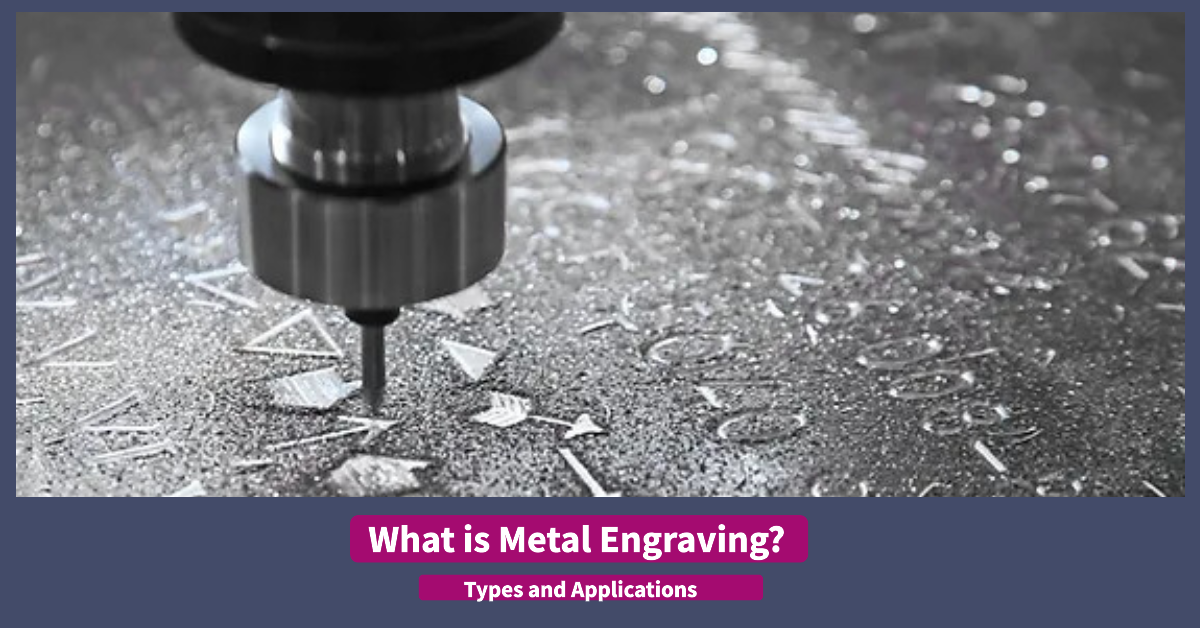
Engraving metal surfaces is not only used for aesthetic and personalized items, but it also has a huge role in industrial applications. Various manufactured items or blank works are engraved to create signs, logos, branding, information, serial numbers, and other various features.
Simple terms sharp engraved tool to cut designs(patterns, symbols, text, numbers, etc) on the surface. Also, there are other methods for metal engraving; Rotatory tool engraving, laser engraving, etching, etc.
Let’s discuss the metal engraving process, methods, and its typical applications in brief.
Mechanical metal engraving
You might have seen names or artistic patterns in bracelets, the size of the wench on its body, and images engraved on currency coins, all of these are examples of metal engraving. So, it is a process of carving 2D designs on the surface by removing material at a certain depth. However, carving tools are not only the way to engrave metals. Other techniques like laser engraving, chemical etching, and rotary engraving.
Metal and alloys like stainless steel, aluminum, brass, titanium, zinc, gold, silver, etc. are compatible with the engraving process. Consequently, material type is one of the key deciding factors in choosing a suitable engraving technique.
The following are the most common metal surface engraving types that are used from jewellery and decorative items to printing and other industries.
1. Rotary Engraving
Rotary engraver
It is a mechanical engraving type used for relatively deep engraved features on the surface. A machine tool with single or multiple flutes makes deeper cuts by removing the material like other standard machining processes. You can choose this for industrial engraving projects, both 2D and 3D appearances.
It leaves some burrs or microchips that reduce the smoothness of engraved letters, numbers, or symbols. To counter this, you can follow the process with the cleaning step after completing the rotary engraving.
2. Diamond Drag Engraving
Diamond drag engraving
Although the whole engraving tool is not made of diamond, the tip is coated with a diamond in diamond drag engraving. A non-rotating tool with a diamond tip is ideal for jewelry and decorative items made with soft metals. The tool moves with specific depth and leaves an engraving impression.
3. Laser Engraving
Laser engraving
Unlike mechanical engraving, laser engraving involves creative cavities for design by eroding the material with a focused laser beam. Laser engraving metal has the capability of engraving complex designs, such as custom lettering and image replicas.
The applications of metal engraving are extensive. You can find them in ornaments, iPad covers, aircraft, rifles, etc. Different consumer items and industrial products engrave their surface either for informative or aesthetic purposes.
Hand vs machine engraving
Hand engraving or manual engraving is an ancient technique that has been around since 6000 BCE, but it has been significantly advanced with versatile tooling, enhanced precision, and a lot easier to handle. However, the accuracy depends on the skill of the craftsman and the quality of the tool (gravers, chisels, etc.). The manual method is ideal for custom metal engraving on personalized jewelry, arts, decorative items, gifts, etc.
Engraving a similar design in a large number of parts is not feasible. So, manufacturers use CNC machines for engraving. Mill, lathe, or specialized engraves all can engrave the metal & alloys with suitable engraving bits.
Machine metal engraving provides speed and consistent quality. It is cost-effective for engraving metal parts in large volumes. Most of the industrial parts are engraved with automated CNC machines.
Overall, different types of metal engraving are available that can be chosen based on your work material and the complexity of the design that needs to be engraved. For large-scale parts engraving, machine engraving can be used. On the other hand, laser engraving works well with hard metals and offers more high-speed engraving than any other method.